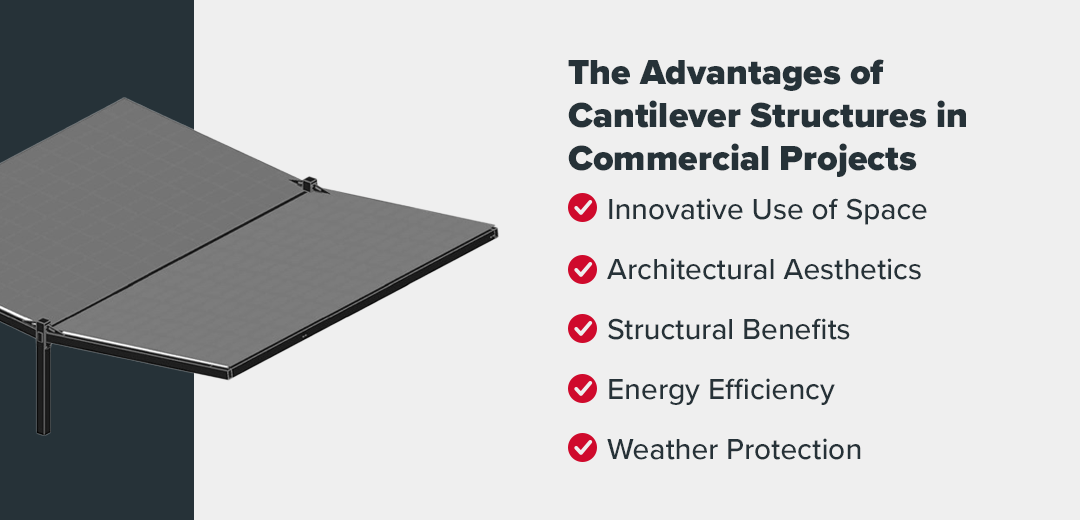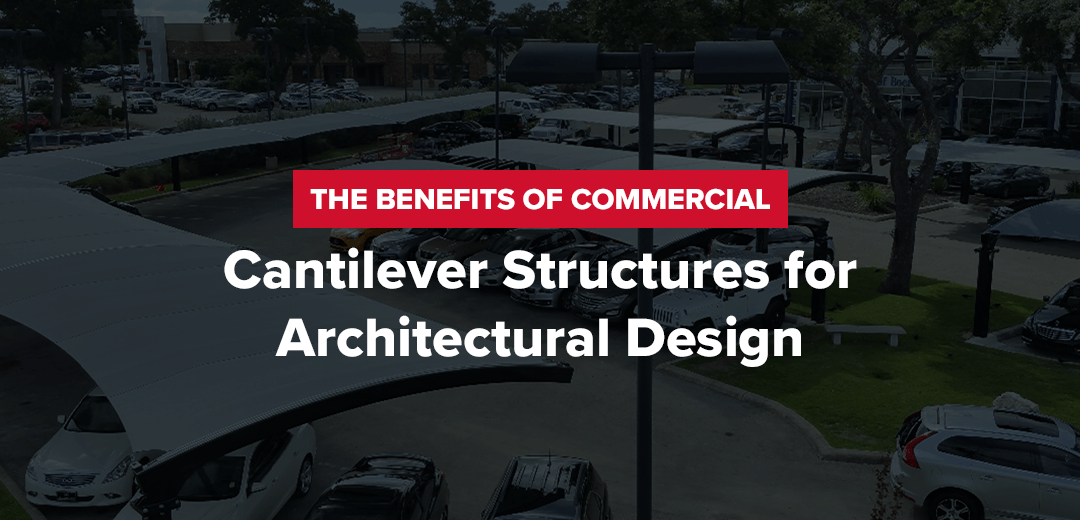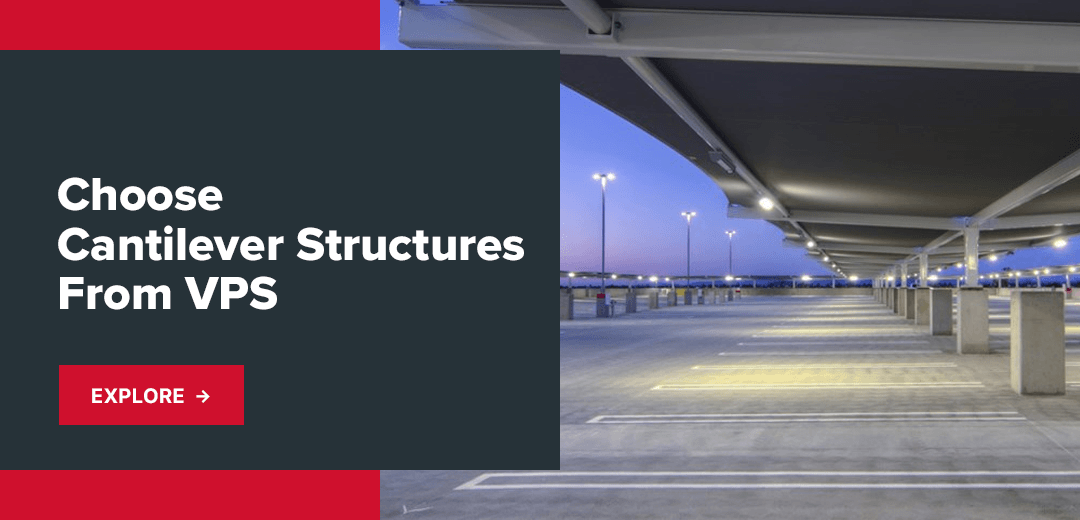While engineers have used cantilever supports in bridges for hundreds of years, it wasn’t until 1910 that Frank Lloyd Wright introduced these horizontal beams into building design. Since then, cantilever architecture has become increasingly popular for its ability to maximize space and provide protection from the elements.
From car coverage for dealerships to hail protection for rooftop parking lots, there are many ways to use cantilevers in architecture. Learn more about the benefits of these innovative structures and how to incorporate them into a commercial design.
Understanding Cantilever Design in Architecture
Cantilever structures appear to defy gravity, but there is a structural reason behind how they work. These beam-supported structures provide efficient load transfer and support, as they’re fixed at one end and free at the other. Some of the most famous cantilever structures around the world include:
- The Link: The Link in Dubai is the longest cantilever structure in the world, projecting 221 feet over the city. The Link boasts an infinity pool that looks over a six-line highway.
- Fallingwater: Another of Frank Lloyd Wright’s iconic buildings is his natural rock structure, “Fallingwater.” This cantilevered building is revered as one of the best examples of American architecture.
- Waldorf Astoria Hotel & Residences Miami: An assemblage of nine stacked cubes gives this well-known hotel its signature look. These cubes rely on cantilever supports for structural integrity.
The Advantages of Cantilever Structures in Commercial Projects
Cantilever structures are worthwhile for businesses like automotive dealerships, car rental companies, and more. Discover the top reasons why architects choose them for commercial projects.


